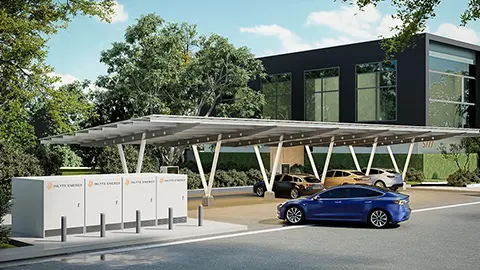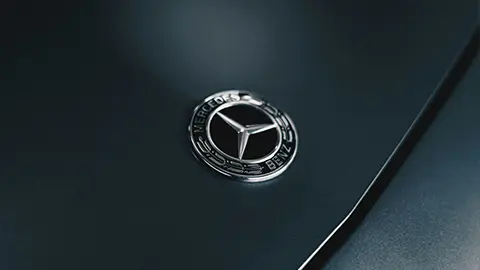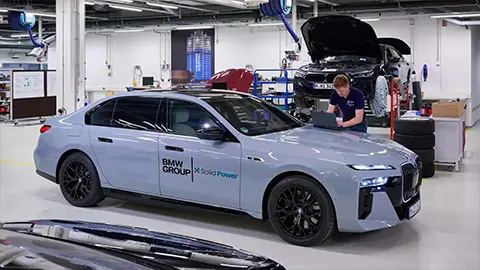Electric Car Sales in 2024
If you’ve been reading or watching the news lately, it would be easy to think that America has turned its back on electric cars. The headlines talk of car lots filling up with electric vehicles, slowing sales, and increased buyer resistance because of a lack of charging infrastructure. There is some truth to what you’re reading: over the last few years, EV sales soared, fueled by early adopters attracted by the new technology and the green credentials EVs offered; having satiated that market, automakers now face a more difficult task of reaching mainstream buyers at more accessible price points.
While an EV is, in relative terms, easier to sell to a premium customer already accustomed to paying a price premium, more value-conscious mainstream drivers don’t have the luxury of being able to spend a few thousand dollars more for the electric car they want. And until very recently, outside of Tesla’s Model 3, there have been very few EV choices in the $30,000 to $40,000 price point that most American new-car buyers shop in.

Mainstream EV Offerings Coming from All Brands
All of that is changing, as automakers are now launching more varied models at different price points – and cutting prices on vehicles that previously came at a larger premium. In recent months, Ford, Nissan, Hyundai, and others have cut prices on their best-selling EV models, following Tesla’s lead, and have also introduced attractive lease and finance offers. Those offers are working: despite the gloomy headlines, EV sales continue to grow in 2024.
In the first quarter of 2024, U.S. year over year growth rate for electric cars was 15 percent, which reflects positive growth compared to the overall market, which was up only 4.7 percent. Year-over-year growth of electric car sales did slow compare to the 2022-2023 numbers, which rose by about 50 percent. Still, electric vehicles represented 7.8 percent of the new-car market compared to 7.1 percent the year prior.
Tesla Sales Slow Down
A large part of the slowdown, however, was because of Tesla, which as a brand is experiencing slowing demand. In the company’s production and delivery report for Q1 2024, Tesla reported that it had delivered about 387,000 vehicles in the first quarter of the year, missing its target of 430,000. As Tesla continues to be the top-selling EV brand – and the Model Y remains the best-selling EV in the U.S. – it continues to have an outsize impact on overall EV sales.
There are many reasons why Tesla’s numbers have fallen off. Some pundits have speculated that CEO Elon Musk’s controversial political leanings are beginning to turn off swaths of mainstream buyers, which are key to the success of the Model Y and Model 3. A more likely explanation is that, aside from the all-new – and low-volume – Cybertruck, the brand’s line is aging. While the Model 3 received a recent facelift, it and the Model Y are not the revolutionary vehicles they once were; and competition from other brands is increasing.
Which Brands Are Selling More EVs?
Indeed, looking outside of Tesla, however, the news for electric car sales in the U.S. is much more positive.
- Audi is making significant progress towards becoming a full-electric brand, with 13 percent of the company’s sales in the U.S. being fully-electric models; indeed, sales of e-tron models were up 29 percent compared to the first quarter of 2023, while the brand’s overall sales dipped by 16 percent.
- BMW’s sales of all-electric models (the i4, i5, i7 and iX) increased 63 percent in Q1 compared to the prior year, with EVs now representing 10 percent of the brand’s sales.
- Ford nearly doubled sales of electric vehicles in Q1 2024 versus the same period in 2023. Nearly 20,000 Ford EVs were delivered in the first quarter. After significant price cuts, sales of the Mustang Mach-E were up 437 percent, sales of the F-150 Lightning were up 321 percent, and sales of the E-Transit van were up 124 percent. Over 5 percent of Fords sold in the U.S. are now fully-electric.
- At Kia, sales of electric vehicles like the EV6, Niro EV, and EV9 drove sales of electric vehicles up 138 percent over the first quarter of 2023; in March 2024, EV sales nearly doubled March 2023. EV sales now exceed 6 percent of the brand’s overall volume.
- It’s a similar story at Hyundai, where EVs also total about 6 percent of overall volume; EV sales were up 76 percent year over year, with the Ioniq 6 selling nearly 10 times the volume it did in the first quarter of 2023.
- Nissan’s EV sales rose slightly in the first quarter, up 1 percent compared to the prior year, as the Ariya replaces the Leaf as the brand’s primary EV. Ariya sales were up 45 percent.
- Toyota and Lexus, two brands that have long histories with hybrid vehicles, had a great first quarter; sales of plug-in models rose 76 percent and 61 percent respectively, with the share of fully-electric models rising 12 percent for Toyota and a whopping 766 percent for Lexus.
The news wasn’t all positive for all brands, however.
GM and Volkswagen EV Sales Shrink
As General Motors phased the well-loved and well-priced Bolt out of production, sales of electric vehicles dropped 21 percent, as the new Blazer electric SUV faced production delays and stop-sale orders. One bright spot was the Cadillac Lyriq, which nearly quintupled sales compared to the first quarter of 2023. With the Blazer EV now back in production, and the new Silverado EV available to private users, expect GM’s numbers to ramp up significantly from its roughly 3 percent EV share.
Volkswagen’s sales of the ID.4, its only electric vehicle, dropped by 37 percent in Q1 2024 compared to Q1 2023, as buyers anticipate the 2024 model, with much-improved range and power as well as an upgraded interior.
What Will Fuel the Next Wave of Growth?
As electric cars become more mainstream, it’s likely that sales won’t grow at the same aggressive rate they have over the last few years. Mainstream buyers are not only more sensitive to price and monthly payment; many of them live in shared accommodations where it may not be as easy to install a home charger as in a single-family dwelling.
Therefore, they’ll need to rely more on public infrastructure for their charging needs – and the challenges facing public charging are real. From chargers that are dysfunctional too much of the time, to a lack of accessibility in more rural parts of the country, the infrastructure in the U.S. needs to improve to provide potential EV buyers the confidence to make the switch.
Fortunately, many steps to greatly improve access to charging are already underway throughout the industry and across the country. Almost every manufacturer has committed to providing customers access to Tesla’s extensive Supercharger network by early 2025, first via plug adapters, and later by adopting Tesla’s North American Charging Standard (NACS) port natively on their vehicles. Seven automakers have formed a consortium called Ionna, which plans to build 30,000 high-speed chargers by 2030 – which would double the current port total across the U.S. Plus, new battery technology lets EVs go further between chargers and operate more efficiently.
While the road to a fully-electric future will have a few hills, valleys, and unexpected curves, there’s clearly a path forward – and EV sales will continue to grow.
















